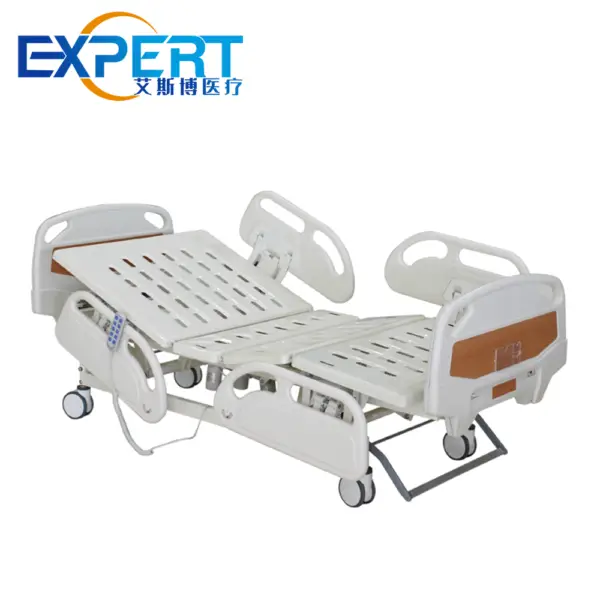Adresse
304, rue Cardinal Nord
Centre Dorchester, MA 02124
Heures de travail
Du lundi au vendredi : 7h - 19h
Week-end : 10h - 17h
Avant de plonger dans le contenu, j'aimerais que vous me rejoigniez sur mes plateformes de médias sociaux où je partage plus d'informations, interagis avec la communauté et publie des mises à jour. Voici comment vous pouvez me contacter :
Facebook :https://www.facebook.com/profile.php?id=100071234835011
LinkedIn :https://www.linkedin.com/company/74943205/admin/dashboard/
YouTube :www.youtube.com/@shandongexpertmedicalequip4695
TikTok :www.tiktok.com/@expertmedical
Commençons maintenant notre voyage ensemble. J'espère que vous trouverez le contenu ici instructif, engageant et utile.

A motorized hospital bed is a specialized piece of medical equipment designed to provide maximum comfort, support, and functionality for patients who are unable to move independently. These beds are equipped with electric motors that allow for various adjustments, such as raising and lowering the bed, adjusting the backrest and knee flex, and positioning the side rails. This versatility offers a significant advantage over traditional manual beds, as it empowers both patients and caregivers to optimize comfort, mobility, and overall well-being. This article will delve into the numerous benefits of motorized hospital beds, addressing common questions and concerns, and exploring the specific features that make them a valuable asset in healthcare settings.
Motorized hospital beds offer a wide range of advantages for both patients and caregivers. Some of the key benefits include:









Motorized hospital beds are operated using a remote control or a wired control panel. The controls allow for precise adjustments to the bed’s position. The bed’s frame is made of durable materials and is equipped with electric motors that power the various adjustments.
A motorized hospital bed may be beneficial for individuals who:

| Caractéristique | Lit d'hôpital manuel | Motorized Hospital Bed |
|---|---|---|
| Ajustement | Requires manual effort, which can be physically demanding for caregivers and may not provide precise adjustments. | Electric motors allow for easy and precise adjustments, reducing the physical strain on caregivers and ensuring optimal patient comfort. |
| Confort | Less customizable, as the bed cannot be adjusted to various positions. | Highly customizable, with adjustable backrest, knee flex, and height, allowing patients to find the most comfortable position. |
| Sécurité | Can be less safe, as manual adjustments may be difficult and time-consuming, increasing the risk of accidents. | Safety features such as bed rails and alarms, combined with easy and precise adjustments, can help reduce the risk of falls and injuries. |
| Coût | Generally less expensive upfront. | Higher initial cost, but may be covered by insurance and can provide long-term cost savings due to improved patient outcomes and reduced caregiver burden. |
Motorized hospital beds offer a multitude of benefits for patients and caregivers, enhancing comfort, safety, independence, and overall well-being. By understanding the features and benefits of these beds, healthcare professionals and patients can make informed decisions about whether a motorized hospital bed is the right choice for their specific needs.
Combien coûte un motorized hospital bed coût?
The cost of a motorized hospital bed can vary depending on the features, brand, and specific needs of the patient. It is important to consider the long-term benefits, such as improved patient comfort and reduced caregiver burden, when evaluating the cost.
What is the difference between a hospital bed and a nursing home bed?
While both hospital beds and nursing home beds can be motorized, hospital beds often have additional features, such as built-in scales and IV poles, that are designed to meet the specific needs of acute care patients. Nursing home beds may have features that are more suitable for long-term care, such as specialized mattresses and pressure-relieving devices.
How do I clean a motorized hospital bed?
Most motorized hospital beds can be cleaned with mild soap and water. Refer to the manufacturer’s instructions for specific cleaning guidelines. It is important to clean the bed regularly to maintain hygiene and prevent the spread of infection.
